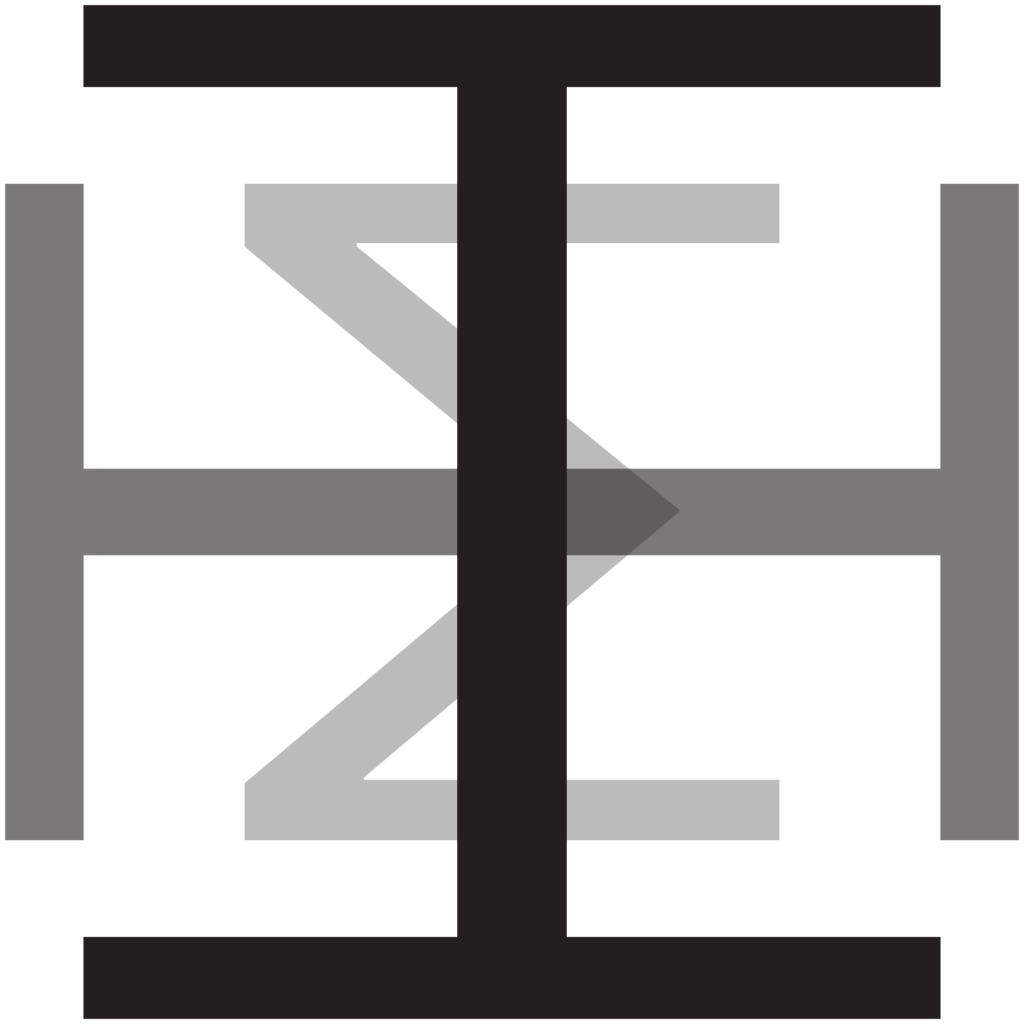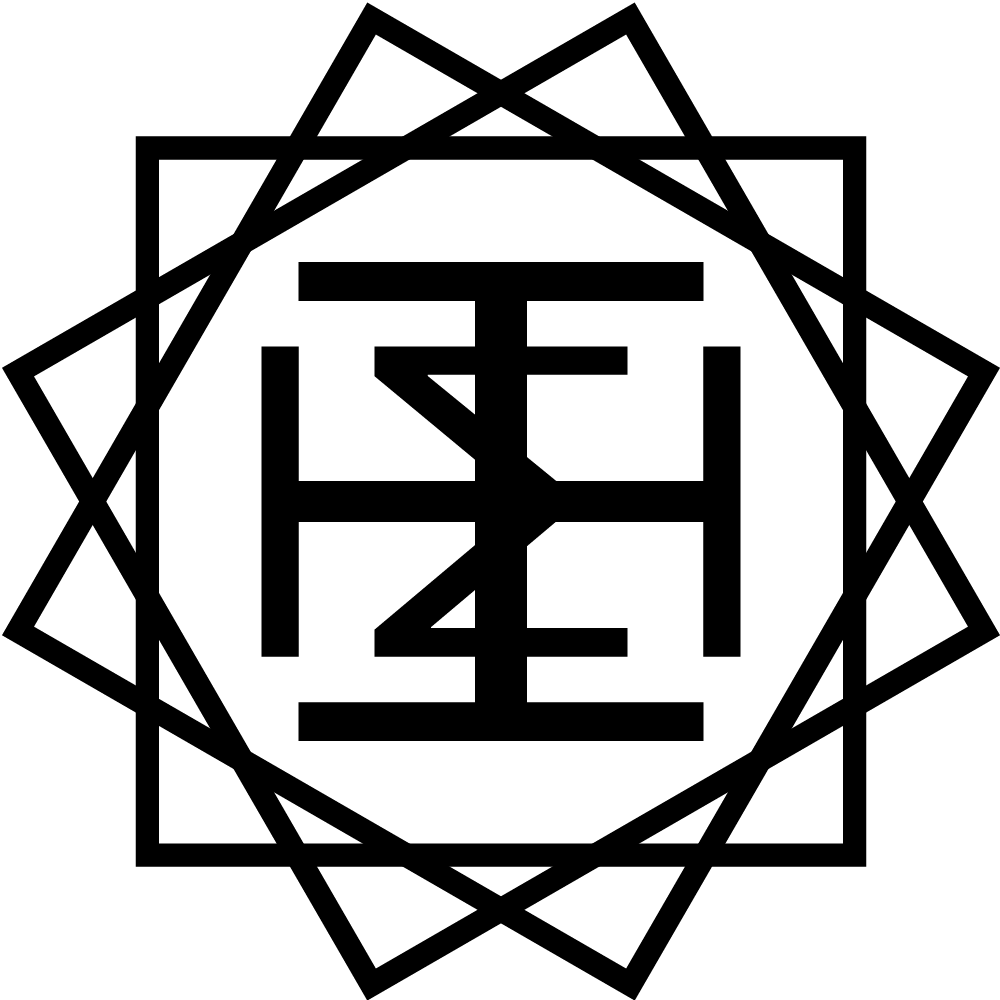Our Seal and Aesthetics
About Urban Monastics


Our seal consists of two key elements. In the center is a Christogram. That is surrounded by three interlocking squares.
Our aesthetic intentionally feels present in cities. Its goal is to help our community be present with God and with others in the cities they live in.
The Urban Monastic Seal
The Urban Monastic Seal feels balanced and is nearly symmetrical. Its subtle asymmetry reminds us that we live in a kingdom not of this world. That we are not yet truly home. There are many layers of meaning carefully designed into the seal. Elements that highlight Gods desire to be present with us. Calling us to look for the resurrected Jesus everywhere we are. Jesus, our Lord, may your kingdom come.
The Christogram
A Christogram is a symbol that represents Jesus. It is made of letters from a name associated with Jesus. This Christogram uses the Greek letters iota-eta-sigma. This is often written as IHS or IHC in the Latin alphabet. These are the first three letters of the Greek name of Jesus – ΙΗΣΟΥΣ or ιησους. Another Christogram uses the title “Christ” (in greek it is ΧΡΊΣΤΟΣ or χρίστος). This is known as the chi-rho. We chose to use His first name due to our strong connection with the human person of Jesus.

Our seal shown highlighting the central Christogram.

The capital greek letters iota-eta-sigma. Here each lighter than the former.
Jesus is a person who lived amongst people in cities where He worked, prayed, and rested. He lived a life that shares much in common with ours. Each successive letter of the Christogram is smaller than the one preceding it. This represents Jesus drawing us into himself. To Jesus calling to us. To let Him be the center of our lives. The first two letters also create a Greek cross. A cross where all the arms share the same length. A reminder of the balance we long for and work towards as monastics.

A traditional IHS Christogram has two more elements. A cross above the letters and a set of three nails below. The cross is a part of our Christogram letter form. Though the set nails have been left off. One piece of the symbolism for the outer portion is of the stone rolled away from the empty tomb. This focus on the resurrected Jesus would be less clear if the nails were included.
(Included an image of the IHS Christogram from the Seal of the Jesuits)
The Outer Portion
Cities impose themselves on nature. Crisp edges and hard angles define our created spaces. The buildings, ways, and systems that give life to our cities create systems we must live within. Most of us will be born and die within the cities of our world. The patterns and rhythms of urban life inform our lives. Yet, more central than all the ways of humanity, we have Jesus. He is resting within our cities and is always calling us back to Himself.

The outer portion of our seal is made up of 12 rigid right angles. There is one corner for each of the apostles. These corners form squares. Within cities, squares form foundations and starting points. There is one corner on each square for each of the gospels. Their testimony to the life and death of Jesus is our foundation. The life of Christian faith begins in the person of Jesus, as told through the gospels. The four points also symbolize the four aspects of our lives: prayer, simplicity, work, and hospitality.
Three identical squares hold within them the three letters of the Christogram. The squares are evenly rotated into a circular shape. These three squares and three letters point us to the Trinitarian nature of our one God. This outer portion was inspired, in part, by the Place de l’Ètoile in Paris. It is a central place in the city of our founding. It is a place where 12 roads meet a central roundabout. It is a place where people join in celebration, as we join Christ in celebrating.
Each of the squares is connected and bound to the others. This is a reference to how we are bound to one another, to those who have come and are yet to come. Together, the three squares form a single circular shape. In this circular form, we can see the shape of a large stone. Like the stone that sealed the tomb of Jesus. The stone that had been rolled away. A stone like those blessed women saw the empty tomb and heard the good news. Jesus was no longer among the dead, for He had risen. Jesus was not dead, but alive. In the days to follow, Jesus would be seen in many places. Let us continue to look for Him wherever we are and in all that we meet.
Present with God,
Present with others.
Urban Monastic Aesthetics
It is intentional that our aesthetic feels like it has grown out of the city. To have our visual elements feel at home in cities. A desire for our work to not follow the fast trends of today. That we focus on a simplified elegance that will age better. Anchoring us in place through simplicity along with a strong reliance on photography. We also want to connect ourselves to monastic history. One way we do this is through the use of a medieval typeface for much of our texts. When possible we want to highlight other aspects of this tradition.
You can find more details in our media content guidelines.

